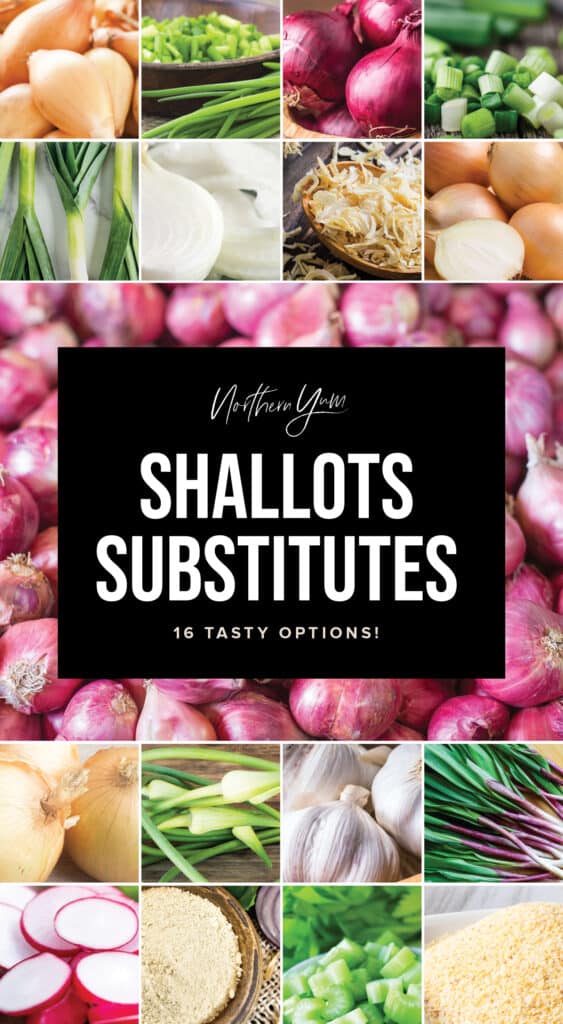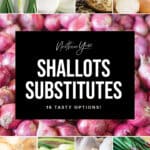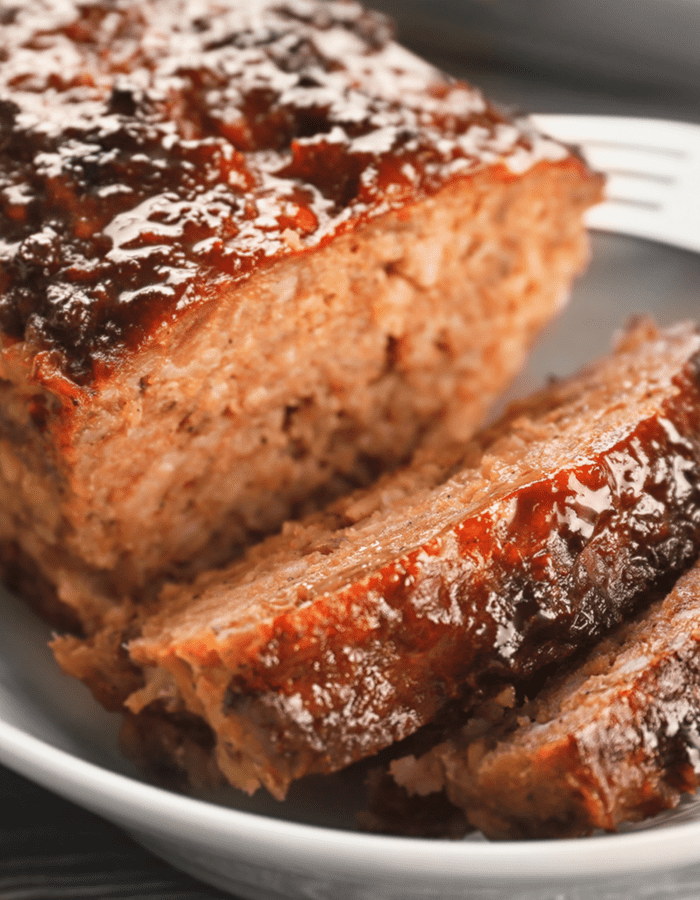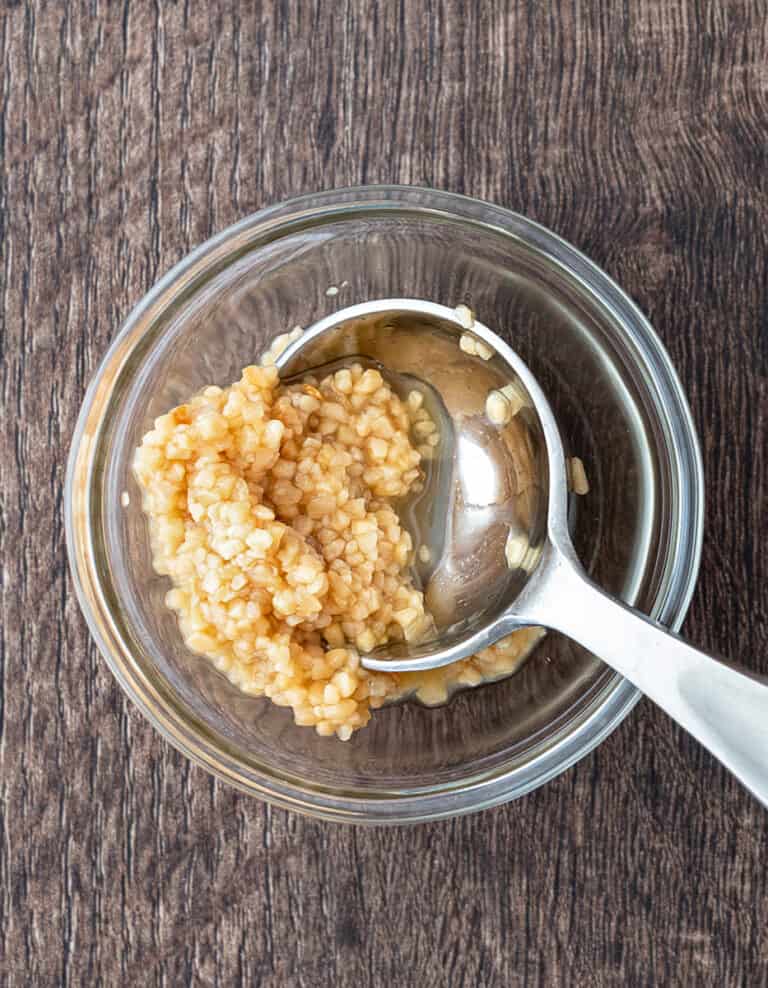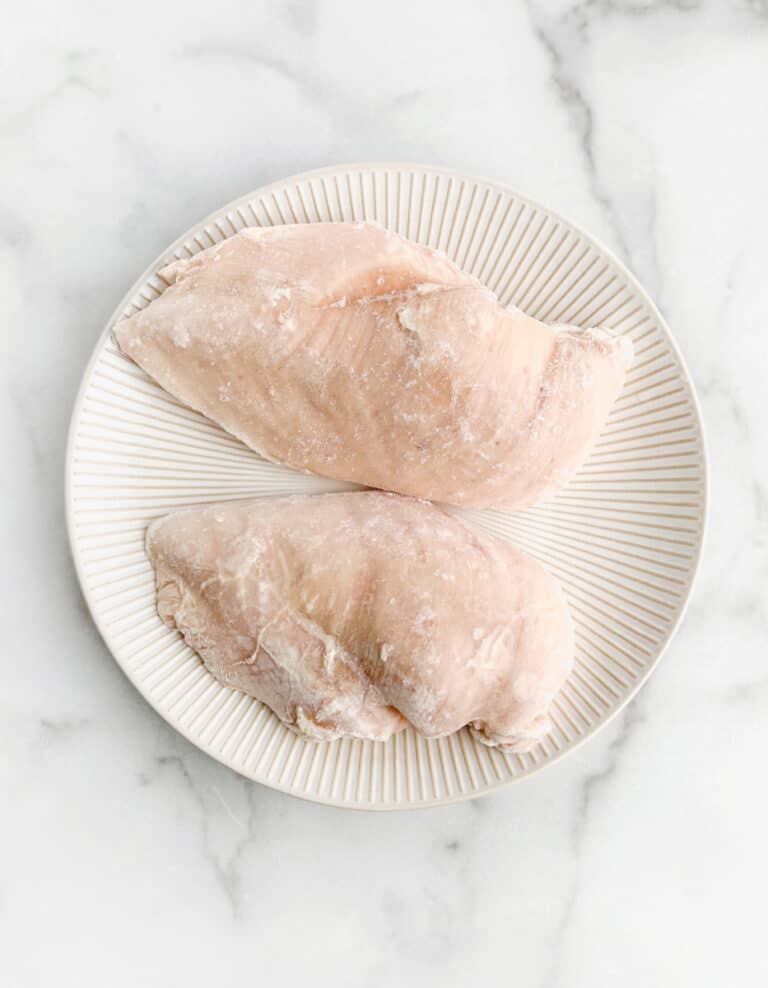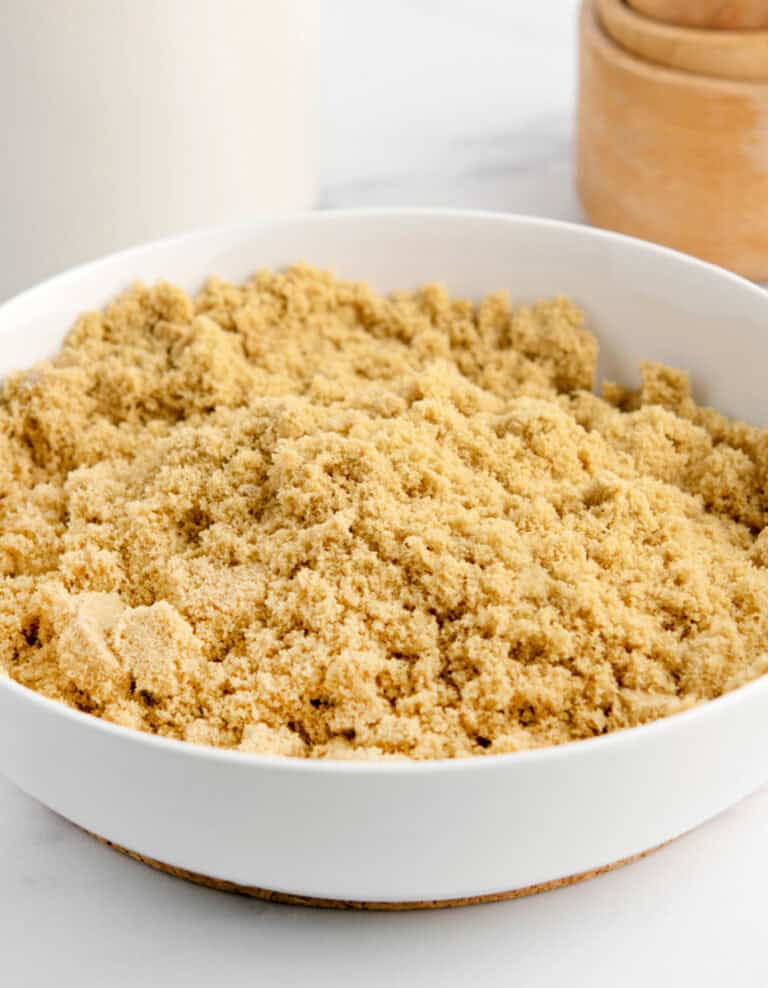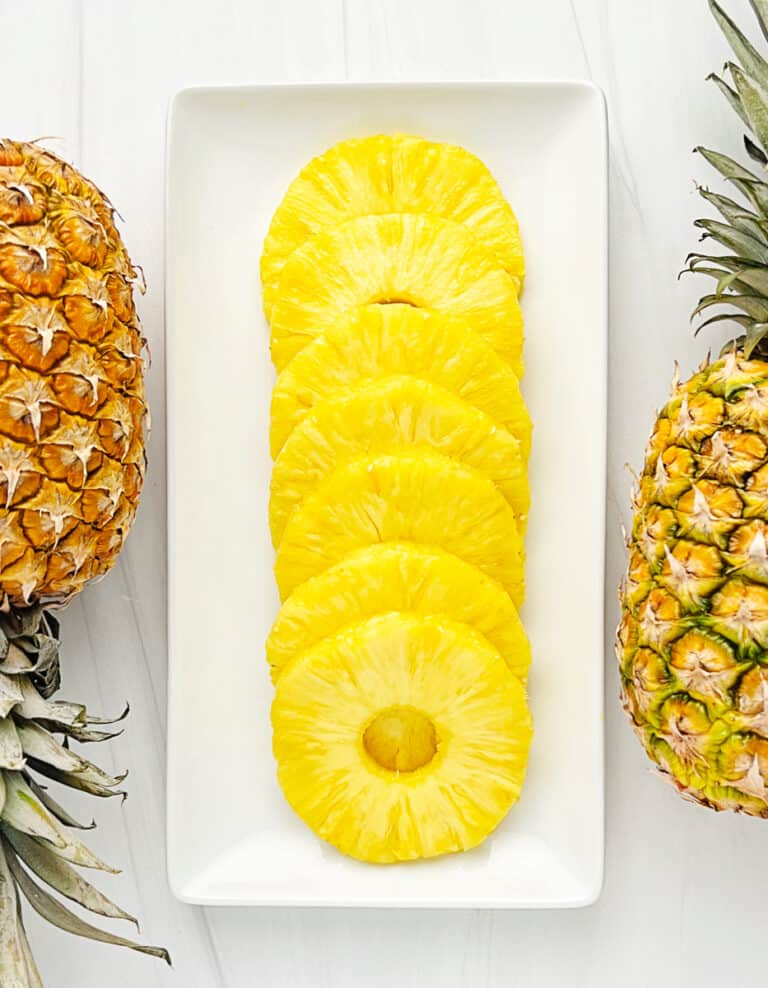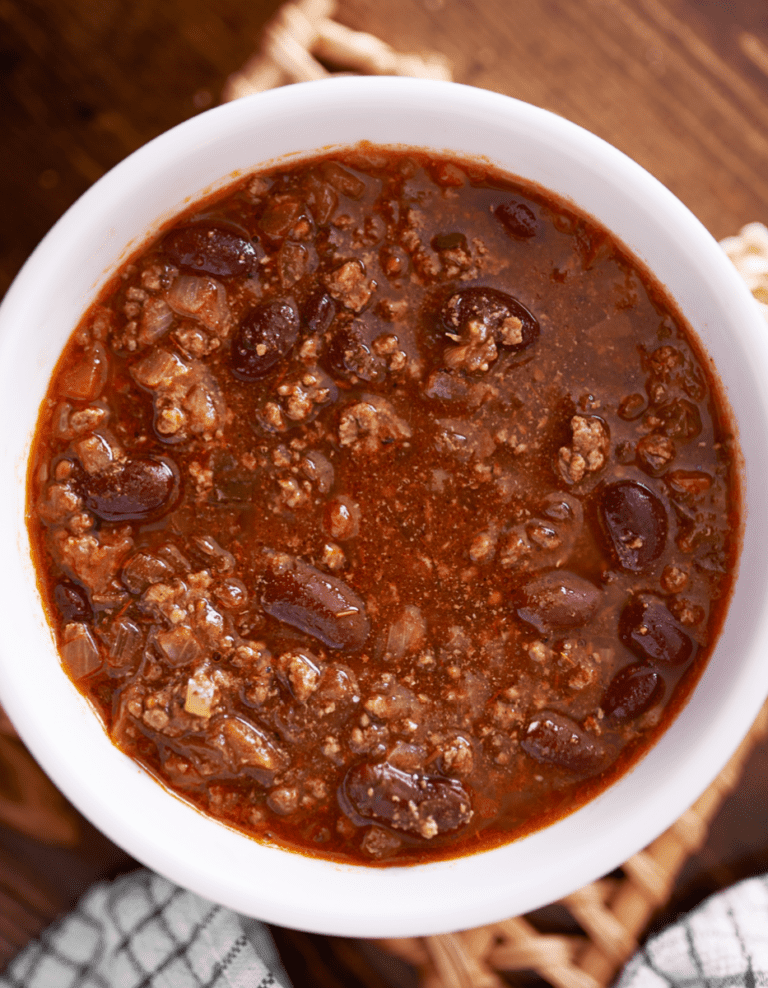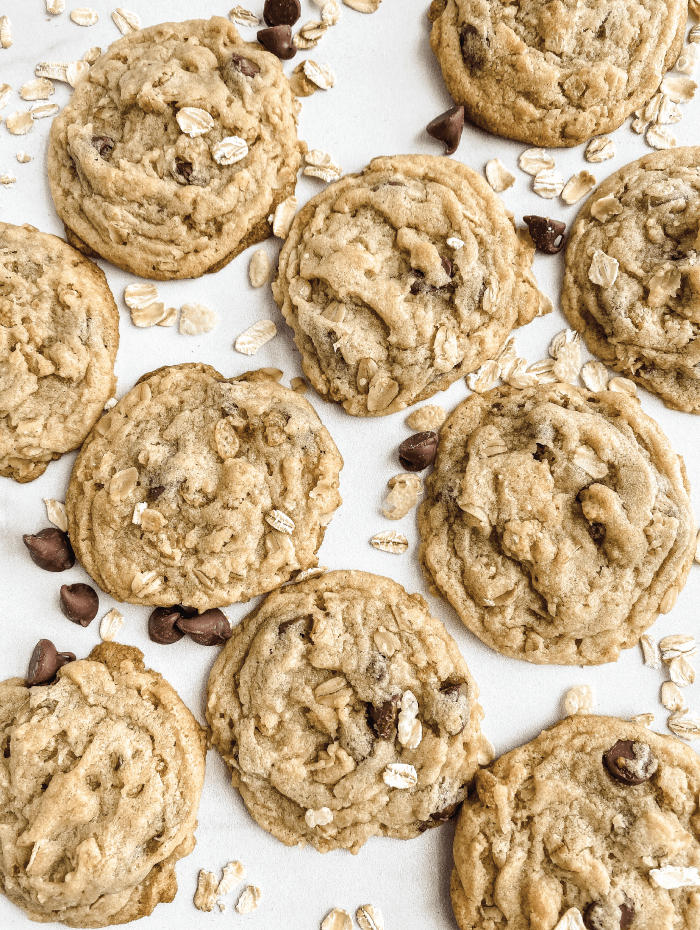Looking for the best shallot substitute? From leeks to yellow onions, with this list of 16 alternatives, you’re sure to find the perfect substitute for your dish.
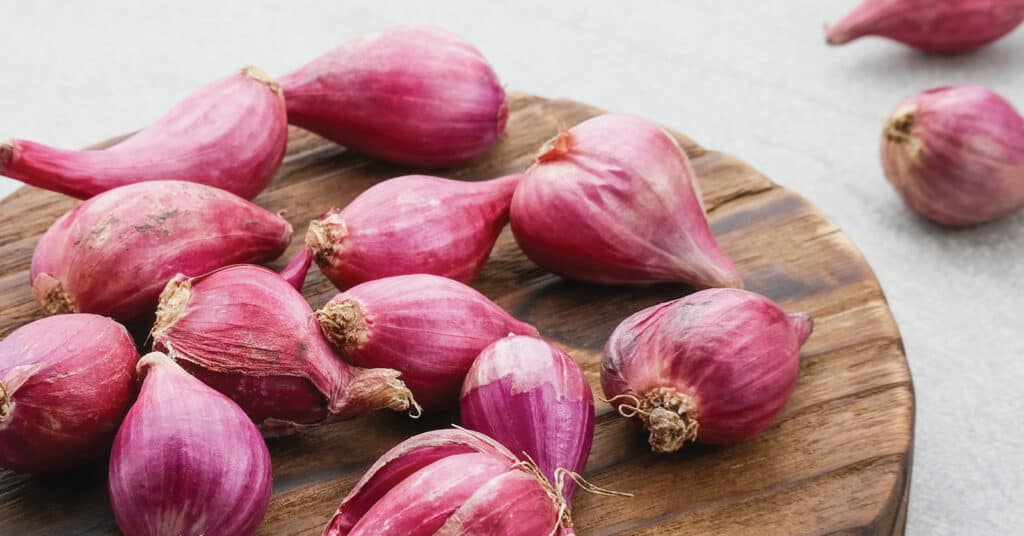
Shallots are a delicious and versatile ingredient found in a wide range of dishes, including salads, soups, and pasta. You’ll also find them in many vinaigrettes, cheddar fondues, and sauces.
Find What You’re Looking for:
If you’re out of shallots or want to try something different, there are plenty of substitutes. From garlic to white or yellow onion, there’s sure to be one that will work for you. So next time your recipe calls for shallots, don’t fret—reach for one of these 16 different ingredients instead!
The Best Shallot Substitutes
So what is the best substitute for shallots? The answer is that it depends on how you are using shallots. It’s helpful to answer these questions:
- Do you need to replace raw shallots? or cooked?
- Does the recipe require the taste of onion?
- Does your dish need a hint of garlic?
- Are the texture and color of the shallots important for what you are making? Or does it primarily need the flavor?
Keep these questions in mind when you’re selecting the right replacement for your dish.
Before we get into substitutes, here’s a bit about shallots themselves:
Shallots have a mild, yet sweet and pungent flavor of garlic and onion. This bulb vegetable is a member of the onion or Allium family, which also includes onions, garlic, leeks, scallions, and chives. Many of which are listed as substitutes on our list.
One medium shallot chopped is about 1/4 cup (a small shallot is 2 tablespoons and a large shallot is about 1/2 cup). This approximation will help us when determining how much of another ingredient to use.
Read on to learn about 1) common substitutes, 2) unique options, and 3) some powder options you can use when you are in a pinch or need to add additional flavor to a common alternative.
Common Shallot Substitutes
Let’s start with the most common alternatives to shallots. These ingredients are among the most recommended by cooks and chefs to use in place of shallots when needed.
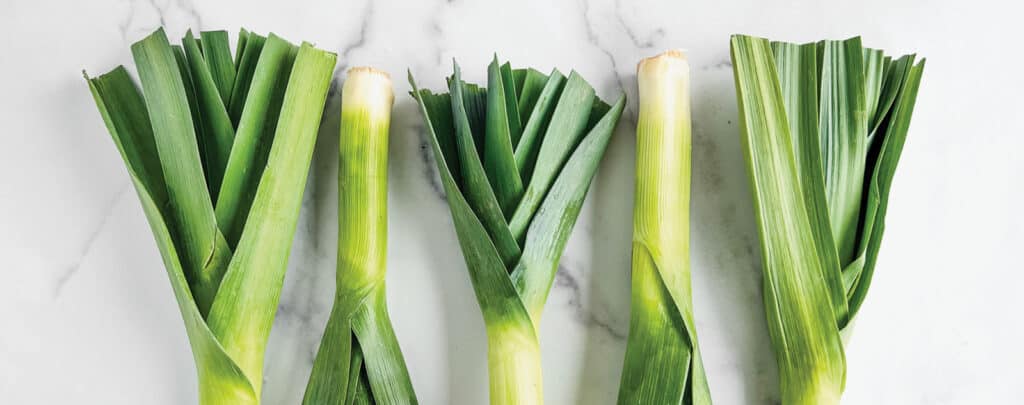
#1 Leeks
Leeks are a type of onion that closely resembles the shallot. When substituting leeks for shallots, it’s important to keep in mind that leeks are even milder in taste than shallots. The green part of leeks is more fibrous, so be sure to use only the white and light green portions.
Substitution tips: substitute leeks when recipes call for cooked shallots like pasta, soups, and risotto. Be sure to only use the white and light green portions. Use in a 1:1 ratio, or slightly more leeks because they have a milder taste.
Substitute 3 to 4 leeks for 1 medium shallot, both raw and chopped.
Read more: What do leeks taste like? And how do you cook them?
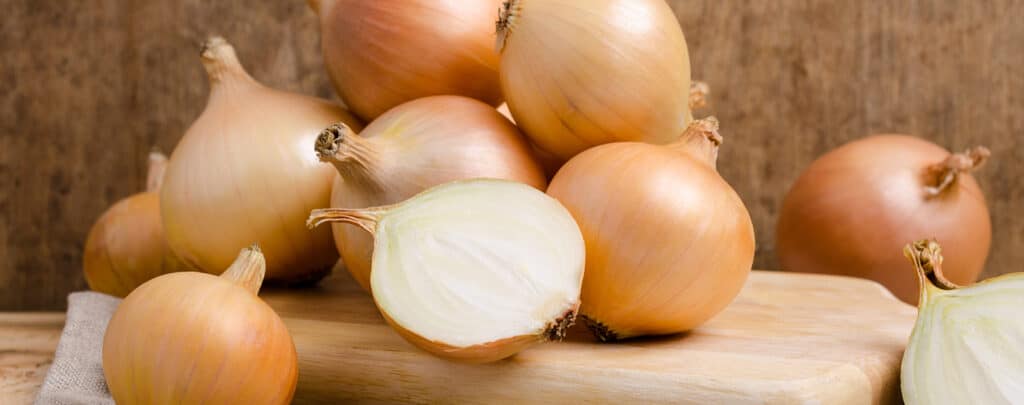
#2 Yellow Onions
Yellow onions are one of the top ingredients to use as a shallot replacement. While shallots have a more delicate taste, yellow onions are stronger and will add a deeper flavor to your dish.
Substitution tips: use half as much onion as you would shallot, and chop yellow onions finer than you normally would to more closely resemble a shallot. Yellow onions will take longer to cook, so you also may need to adjust the cooking time accordingly.
Substitute 1/4 yellow onion for 1 medium shallot, both raw and chopped. Or half the chopped amount, use 1/4 cup yellow onion for 1/2 cup chopped raw shallots.
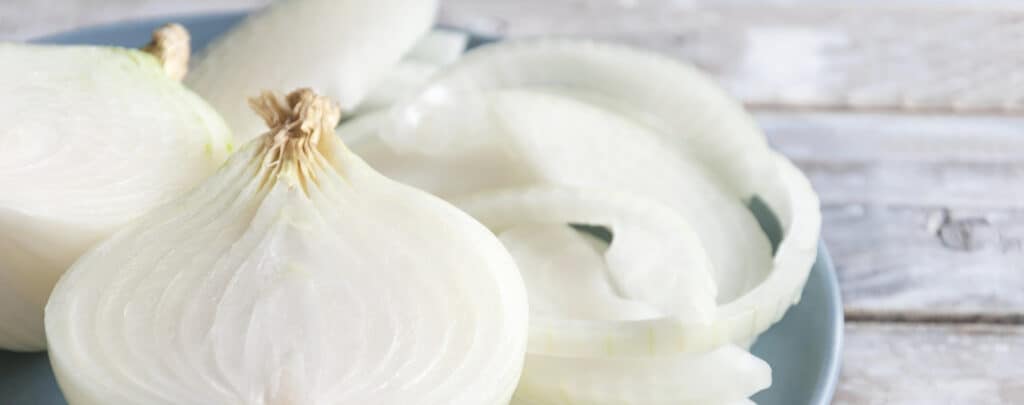
#3 White Onions
White onions are another great substitute for shallots. Both shallots and white onions have a similar texture, although the flavor of this type of onion is much more stringent. This makes them ideal for dishes that require a strong onion taste, such as soups and stews.
Substitution tips: you will want to use less than the recipe calls for to avoid overpowering your dish. Use half of what the recipe calls for in shallots.
Substitute 1/4 white onion for 1 medium shallot, both raw and chopped. Or half the chopped amount, use 1/4 cup white onion for 1/2 cup chopped raw shallots.
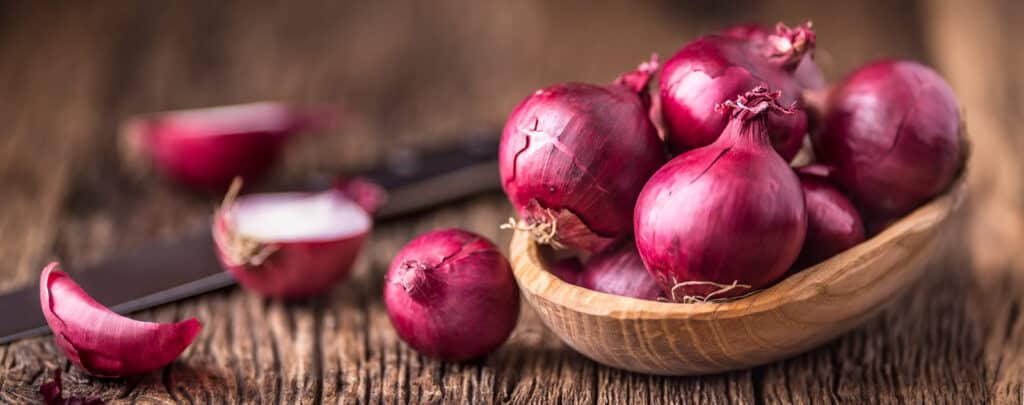
#4 Red Onions
Red onion can be a good shallot substitute, either raw or cooked. They have a similar taste, although sharper and less sweet in taste. They also have a similar texture and can be used in the same way as shallots in recipes.
Substitution tips: use red onion in equal portions to ensure the flavors as balanced. Cooked red onions are a better match than raw red onions.
Substitute 1/3 red onion for 1 medium to small shallot. Or equal measurements of chopped red onion and chopped shallot.
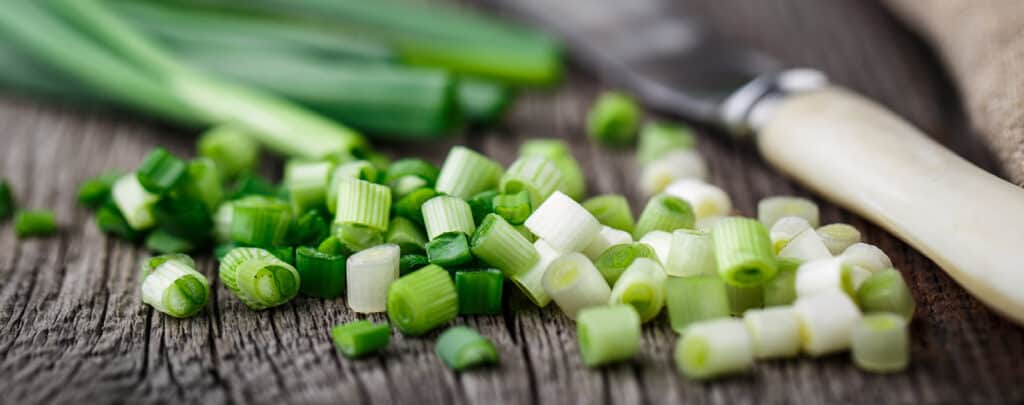
#5 Scallions (Green Onions)
Scallions are a type of onion that is commonly used as a flavor enhancer in many different dishes. When used as a shallot substitute, they can provide a similar flavor without being as strong as traditional onions. However, they lack the garlic taste of shallots.
Substitution tips: scallions can be used in both cooked and raw dishes, an excellent choice when you don’t want to overpower a dish. Use a 1:1 ratio, using the white portion of the green onion only.
Substitute 2 scallions for 1 medium shallot. Or 1 scallion for 1 small shallot.
Learn how to cut green onions with 4 easy methods.
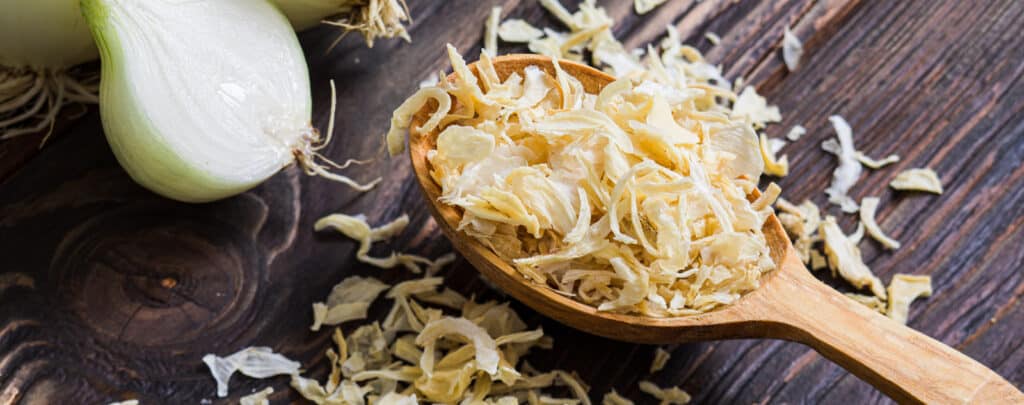
#6 Dried Onions
Dried onions are a convenient way to add interest to any dish, and they can be used as a replacement for shallots in many recipes. It has a more concentrated taste without the garlicky flavor shallots have.
Substitution tips: because of the condensed flavor of dried onion, you’ll want to use less compared to shallots.
Substitute 3/4 tablespoon dried onion for 1 medium shallot.
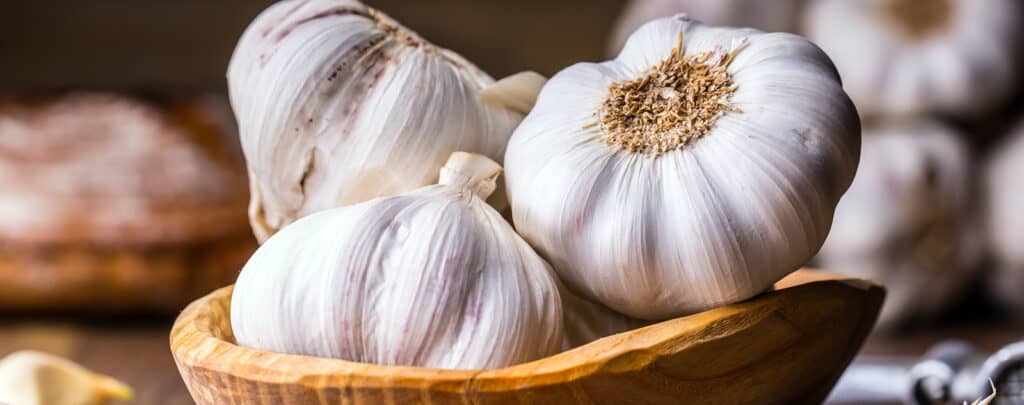
#7 Garlic
Garlic and shallots are both members of the onion family, so it’s no surprise that they can be used as substitutes for one another in many recipes. Garlic has a more intense flavor than shallots, so you’ll need to use less of it.
Substitution tips: roast garlic cloves to mellow their taste before adding them to a dish. If a recipe calls for cooked shallots, you can usually swap them for minced garlic without making any other changes. Just be aware that garlic will change the flavor of the dish, so use it sparingly at first and adjust to taste.
Use 1 clove of garlic in place of 1 shallot. Add more as needed.
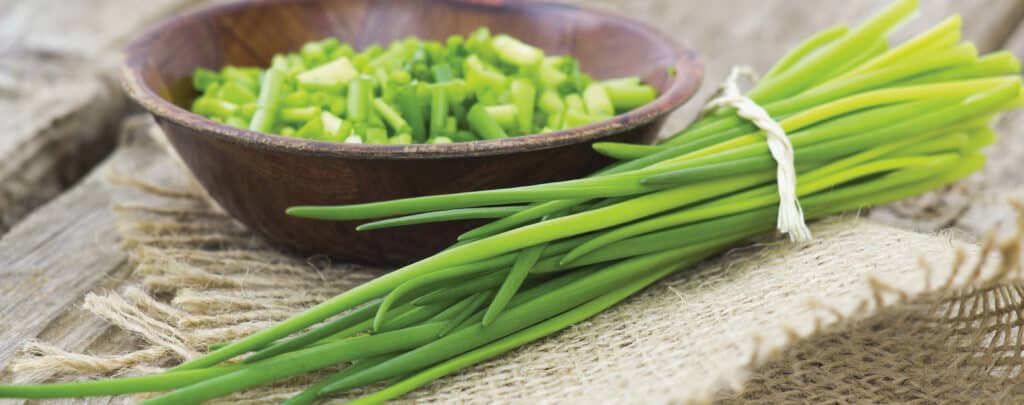
#8 Chives
Chives can be a good substitute for shallots in many recipes. They have a thinner, more delicate texture compared to shallots, and are not as strong as a traditional onion, making them ideal for dishes where you want a little bit of onion taste without overwhelming the other ingredients.
Substitution tips: when substituting chives for shallots, use a 1:1 ratio.
Substitute 1/4 cup chopped chives for 1 shallot. (Or equal portions of chopped chives to chopped shallots.)
What is the difference between chives and onions? Chives are much milder while green onions have a strong, onion taste.
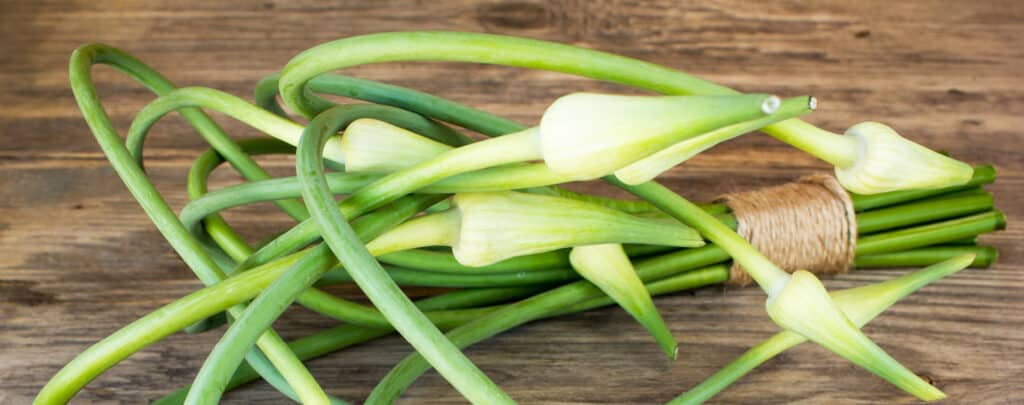
#9 Garlic Scapes
Garlic scapes are the stems and flowers that grow from hardneck garlic plants. They have a garlic flavor that is not as strong as garlic cloves, making them ideal for salads and other dishes where you want to add just a touch of garlic. They’re softer in texture than garlic cloves, so they blend more easily into sauces and dressings.
Substitution tips: garlic scapes can be used raw or cooked. If you’re looking for a shallot substitute that will add garlic flavor without overdoing it, garlic scapes are ideal.
Substitute 4 to 6 garlic scapes for 1 shallot.
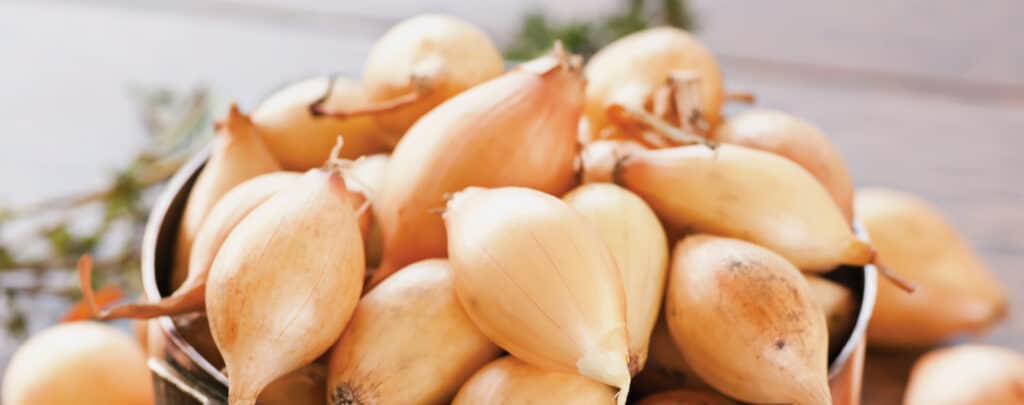
#10 Pearl Onions
Pearl onions are a variety of onions that are small and spherical, with white or pale pink skin. They’re sweeter and less pungent than shallots, making them a good choice for dishes where you want the onion flavor to be more subtle.
Substitution tips: pearl onions can be used in place of shallots in soups, stews, sauces, and sautés. Another option is to use jarred cocktail onions, which are pickled white pearl onions with paprika, turmeric, and other spices.
Substitute 2 pearl onions for 1 shallot. Or equivalent measurements of each.
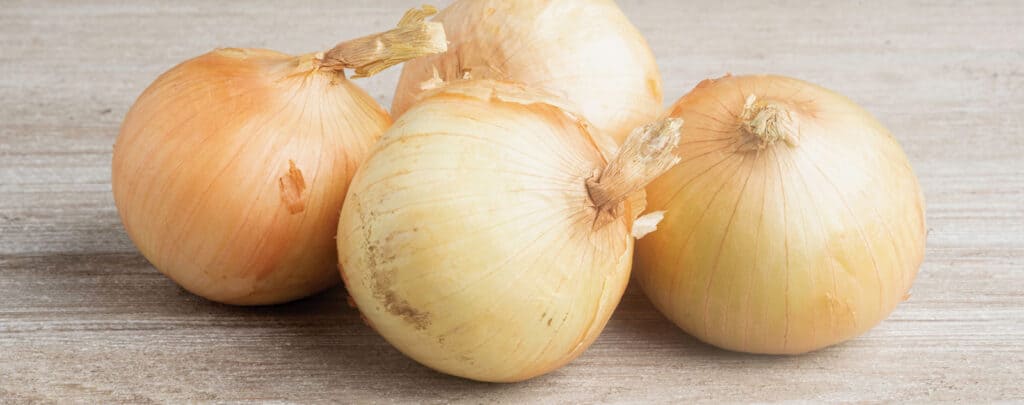
#11 Sweet Onion
Sweet onion is a fine substitute for shallots because it has a milder flavor, compared to white and yellow onions. As indicated by their name, sweet onions can be sweeter than shallots, so keep that in mind when using these onions as a replacement.
Substitution tips: use half as much sweet onion as you would shallots.
Substitute 1/4 sweet onion for 1 medium shallot, both raw and chopped. Or half the chopped amount, use 1/4 cup onion for 1/2 cup chopped raw shallots.
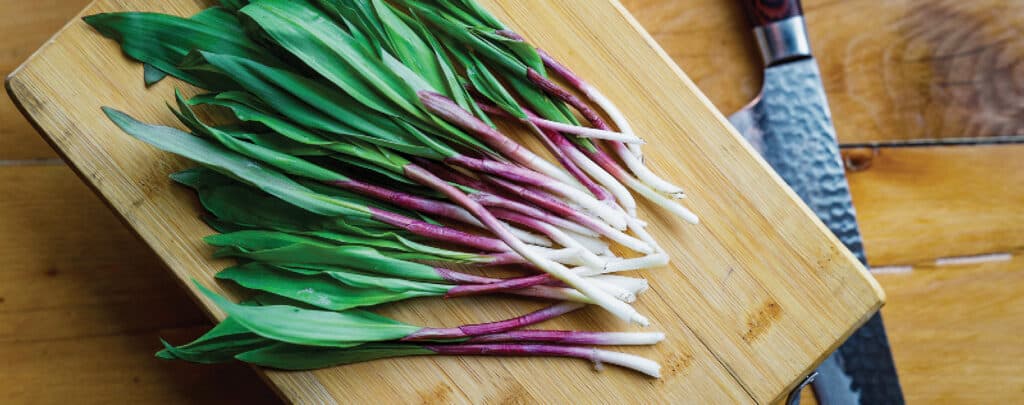
#12 Ramps
Ramps are a member of the onion family and have a similar pungent flavor. They are garlicky, oniony, and strong, but mellow during the cooking process. Making them a great option for dishes that call for cooked shallots.
Substitution tips: when substituting ramps for shallots, use half as many ramps as you would shallots. For example, if a recipe calls for one cup of chopped shallots, use only half a cup of ramps.
Substitute 1/8 to 1/4 cup chopped ramps for 1 medium shallot.
Unique Alternatives

#13 Radishes
Radish is a crunchy and peppery root vegetable that (although less common) can be used as a substitute for shallots in many recipes. When chopped or minced, radishes have a similar texture to shallots and can be used in salads, slaws, or dipping sauces. They also add a unique flavor to soups, pasta dishes, or stir-fries.
Substitution tips: while radishes are not an exact replacement for shallots, they are a good option for those who are looking for a unique shallot substitute in a recipe.
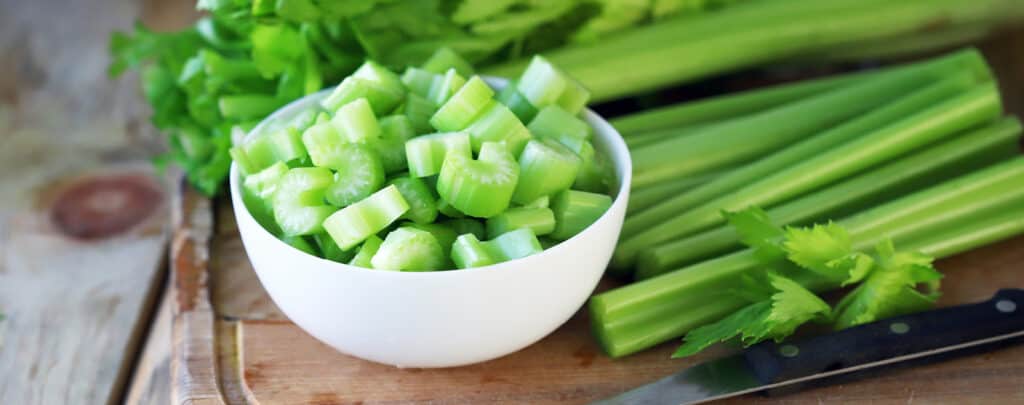
#14 Celery
Celery can be a substitute for shallots because of its texture. Although it’s missing the notes of garlic and onion, it has a crisp, crunchy texture.
Substitution tips: when substituting celery for shallots, it is important to chop the celery finely so that it will cook evenly and not overpower the dish.
Powder Seasonings

#15 Onion Powder
Onion powder is an easy and convenient substitute for shallots, especially when you’re needing onion taste, not necessarily the texture of shallots in your dish.
Consider adding onion powder along with common substitute options that may lack the onion essence. For example, when using garlic or garlic scapes in place of shallots – you may want to add onion powder to get both onion and garlic taste.
When substituting onion powder for shallots, use 3/4 tablespoon of onion powder for every 1 shallot.
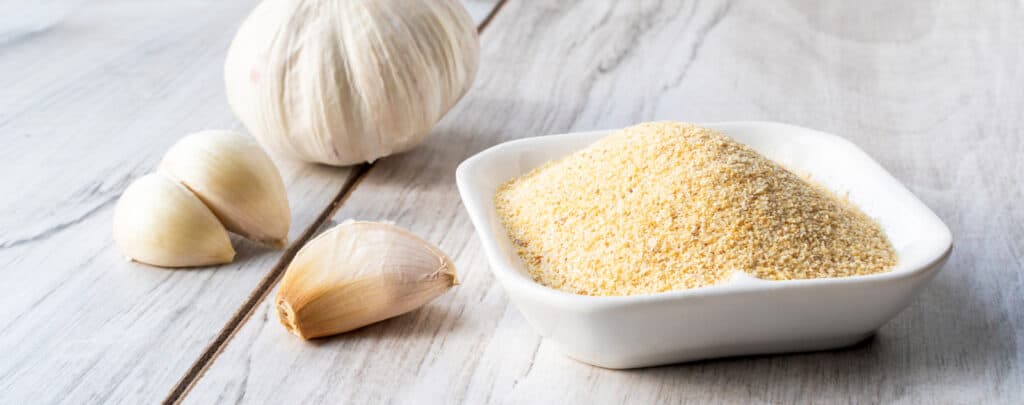
#16 Garlic Powder
Garlic powder is a less common substitute for shallots but can be used when you’re in a pinch because it has a similar flavor profile.
Similar to onion powder, use garlic powder when the alternative you’ve chosen is missing the garlic component that shallots typically have. For example, yellow onion or scallions, which do not have the garlic flavor.
When substituting garlic powder for shallots, use 1/4 teaspoon for each 1 shallot called for in the recipe.
In Summary
Shallots are a delicious addition to many dishes, but you may not always have them on hand. If you’re looking for a substitute, one of these 16 options will do the trick. Each of them has its own unique flavor that will enhance your dish. Give one or more of them a try the next time you need shallots in a recipe.
More Cooking Tips
Pin for later
